Spring Ephemeral Wildflowers of the Hudson Valley
The Hudson Valley has been blessed with a rich endowment of stunning natural features, from the craggy and precipitous mountains of the Highlands, Shawangunks, and Taconics, to the diverse, rolling forests that sweep across the landscape like a tidal wave; and at its center the marrow, or life-blood of the region—the majestic Hudson River. Even in the harshness of winter one can’t help but admire the beauty of the surroundings. In the spring this admiration quickly shifts to blinkless awe as the lifeless ground swells, transforming the sober forests into a vibrant patch-work of color. The diverse assemblage of spring ephemeral wildflowers that populate our forests greatly enhances and complements the already impressive landscape.
As their name implies, spring ephemerals have fleeting lives, blooming at most for only a handful of weeks before they disappear until the following year. As such, they’re quite easy to miss. Years may pass before a person witnesses the full variety or is lucky enough to stumble across a particularly showy patch. I’ve made tracking these flowers down much easier by compiling my own sightings across the Hudson Valley. The best places to view various ephemeral species are marked on this map:
https://www.google.com/maps/d/edit?mid=zqyCu_saj0u4.kxBSGVFZAjQ4
Hepatica
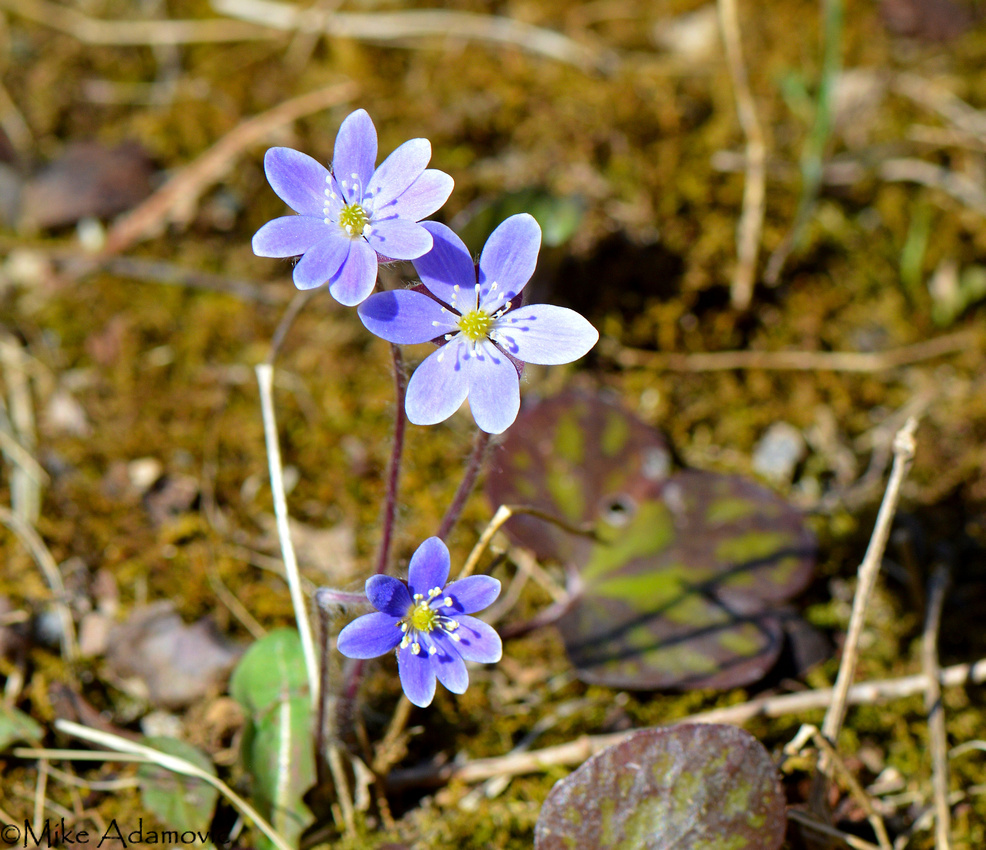

Hepatica is one of our earliest blooming ephemerals, debuting in late March or early April. The delicate purple pastel blossoms are usually the first bit of color dished out to the newly awakened forests, although coltsfoot does arrive earlier on occasion. Plants prefer rich, open woodlands.
Hepatica is divided into two subspecies, based on leaf shape: blunt-lobed and sharp-lobed. The blunt-lobed variety is more common throughout the Hudson Valley.
The fuzzy hairs seen on the stem appear to be a mechanism to retain heat on frigid nights, along with helping to prevent frost accumulation.
Coltsfoot
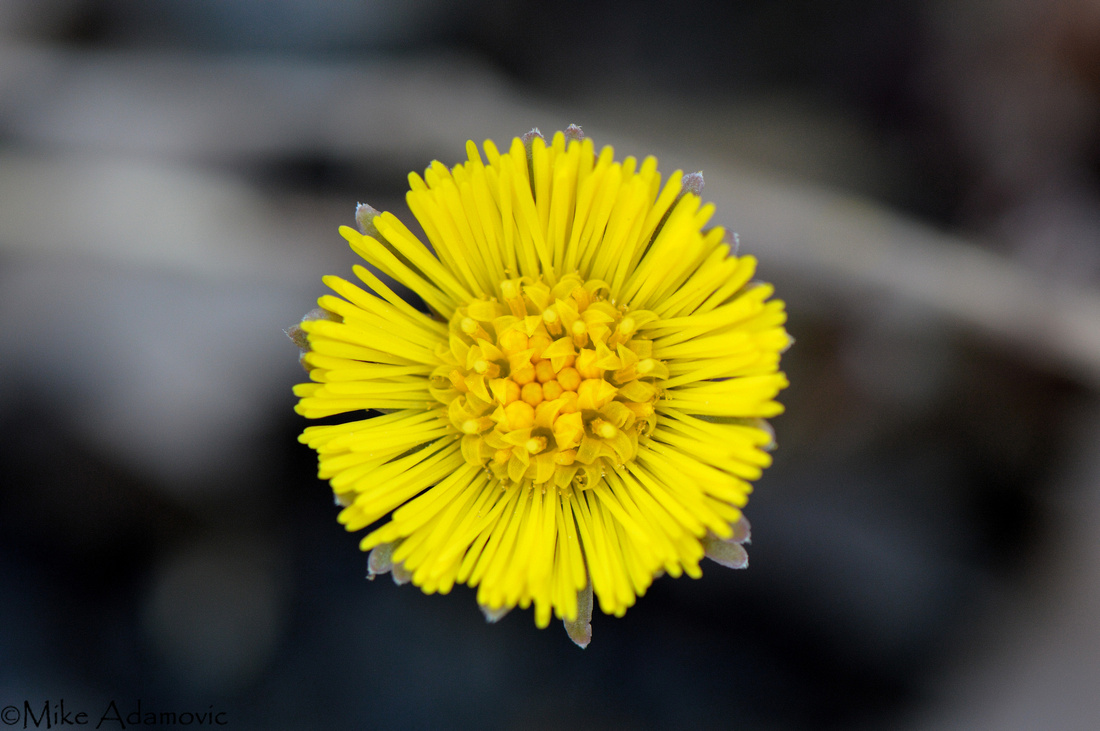

Reminiscent of the weedy dandelion, coltsfoot is a plant easily misidentified. It appears much earlier in the season than its lawn-destroying cousin. Its bright sun-like discs are eagerly awaited, cheerfully announcing that the icy and monotonous days of winter are finally at an end. Plants inhabit woodland edges and waste areas.
Bloodroot
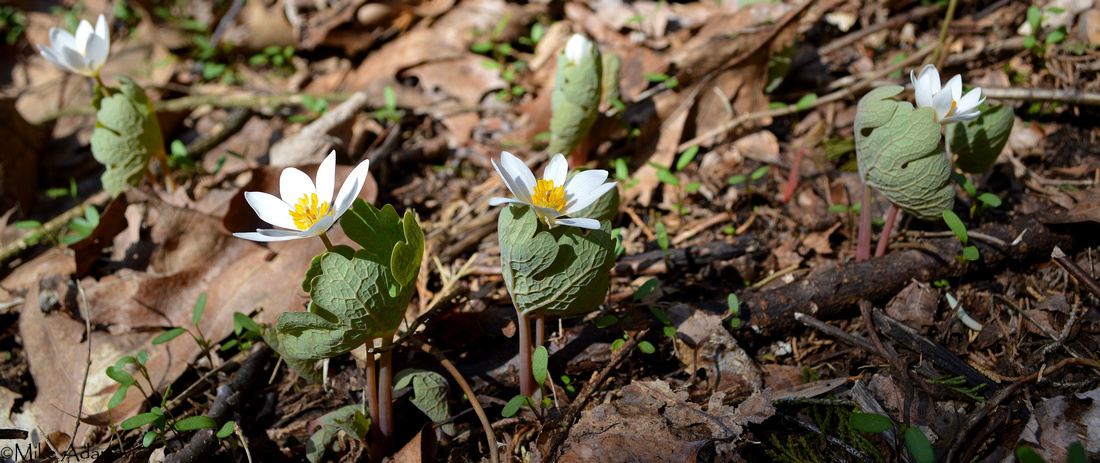

Bloodroot is as uncommon as it is beautiful. Flowers generally last only a day or two before the wind or rain removes the petals. Plants begin blooming in mid-April; usually by May the last of the ivory blossoms disappear. Bloodroot has a preference for moist soils, and can often be found residing along the banks of rivers or other water bodies.
The unusual name is derived from the bright red liquid that exudes from the stem and root if broken. Native Americans and colonists used it as a dye. It stains readily.
Trout Lily
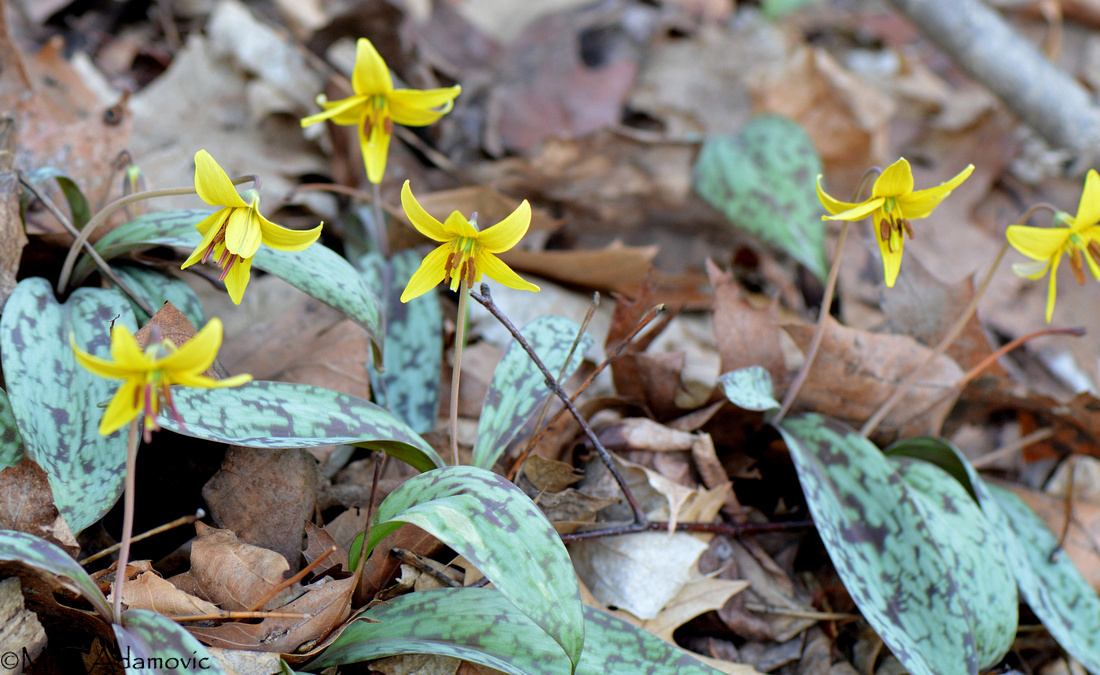

Similarly to bloodroot, trout lilies tend to grow near water, especially within the flood plains of streams and rivers. The plant’s name is derived from its association with riparian areas that contain its piscine namesake, which anglers are apt to pursue right around the time the flowers open in mid to late April. The mottling of the leaves also resembles the patterns found on certain trout species.
These plants tend to aggregate together, producing large groves containing hundreds or thousands of individuals. Despite the prevalence, over 90% won’t bloom in a given year.
Spring Beauty
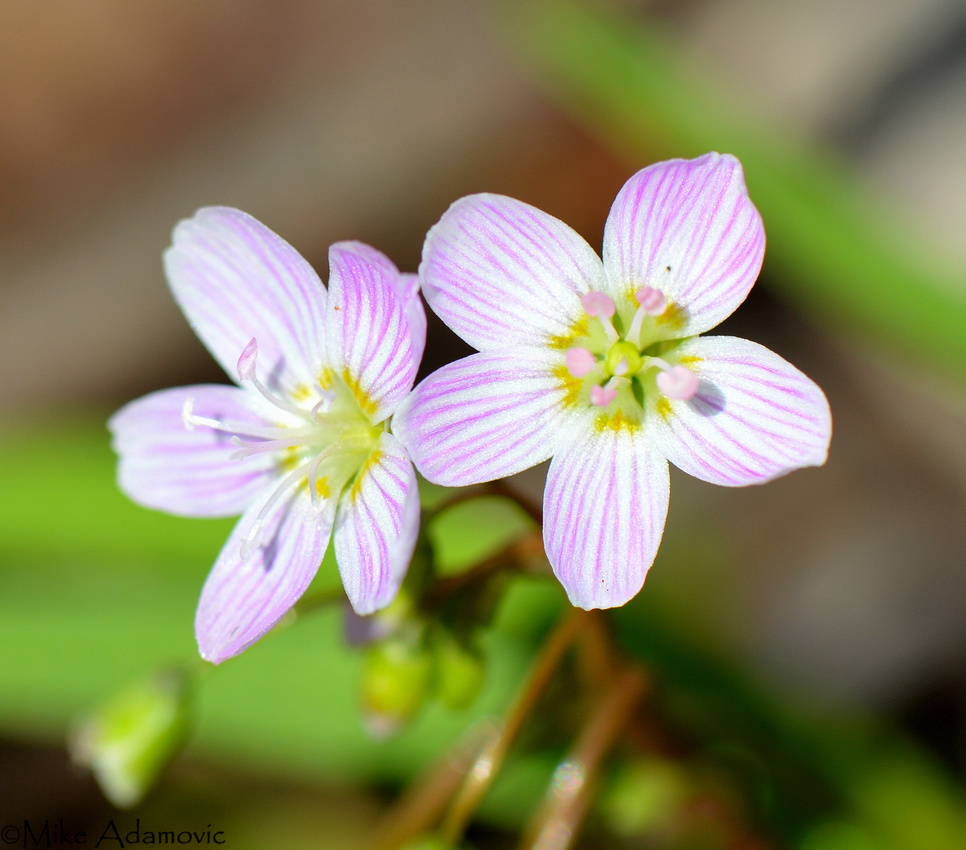

Blooming during the first half of April the pink-white flowers of the spring beauty make for a remarkable sight. Size-wise these plants aren’t very impressive, but their profusion is. This species forms expansive colonies with flowers as numerous as blades of grass. In certain areas it may be nearly impossible to avoid stepping on them during a woodland walk. The frail looking flowers tremble in the slightest wind and quickly close when the sunlight slips behind approaching clouds or the evening horizon.
Red Trillium
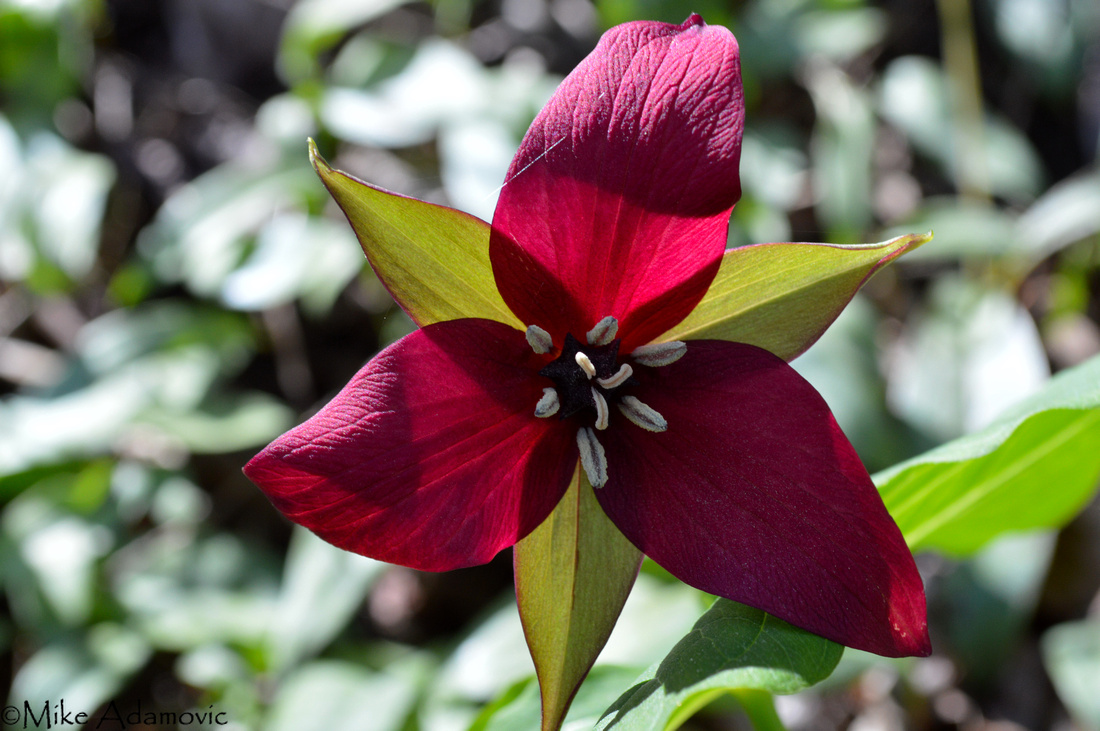

Named for having leaves, petals, and sepals, among other parts, in groups of threes, or trios, red trillium is a plant fond of symmetry. Its large crimson blossoms are sure to be noticed in the understory of rich woodlands in April and May. While visually attractive, this is one plant not to be smelled. The odor emanating from the blossoms has best been described as resembling a “wet dog.” The distasteful smell, in addition to the flower's color, which is similar to that of carrion, draws flies for pollination.
Dutchman’s Breeches
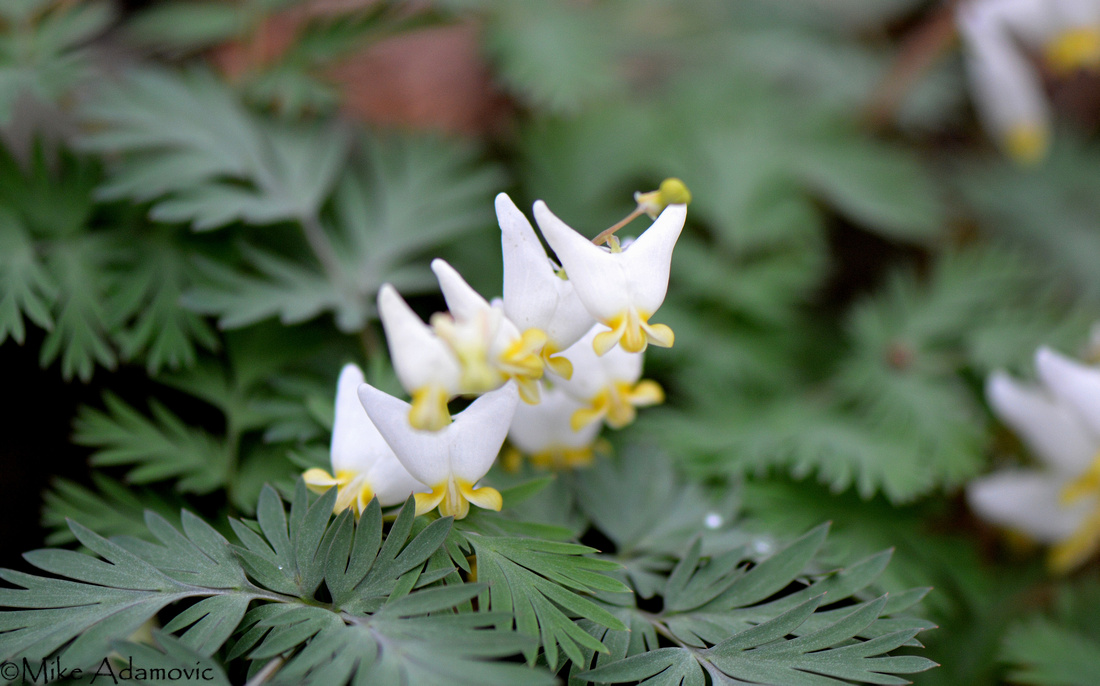

One of the most unusual of the spring ephemerals to be seen is the comically named Dutchman’s breeches that happen to resemble an inverted pair of outdated pantaloons. It’s been conjectured that the strange looking flowers are useful for protecting the precious pollen and nectar from the harsh spring elements. With the nectar sequestered at the very top of the flower, it’s also protected against small insects which might otherwise steal the sweet reward without pollinating the plant. Only insects with exceedingly long tongues, such as bumblebees, can reach the nectar and effectively aid in pollination. Some thieving insects will bypass this ingenious design and simply chew a hole through the flower and obtain the nectar that way.
Dutchman’s breeches can form large colonies, often doing so in rockier sections of woodlands. They bloom from mid-April to mid-May.
Violets
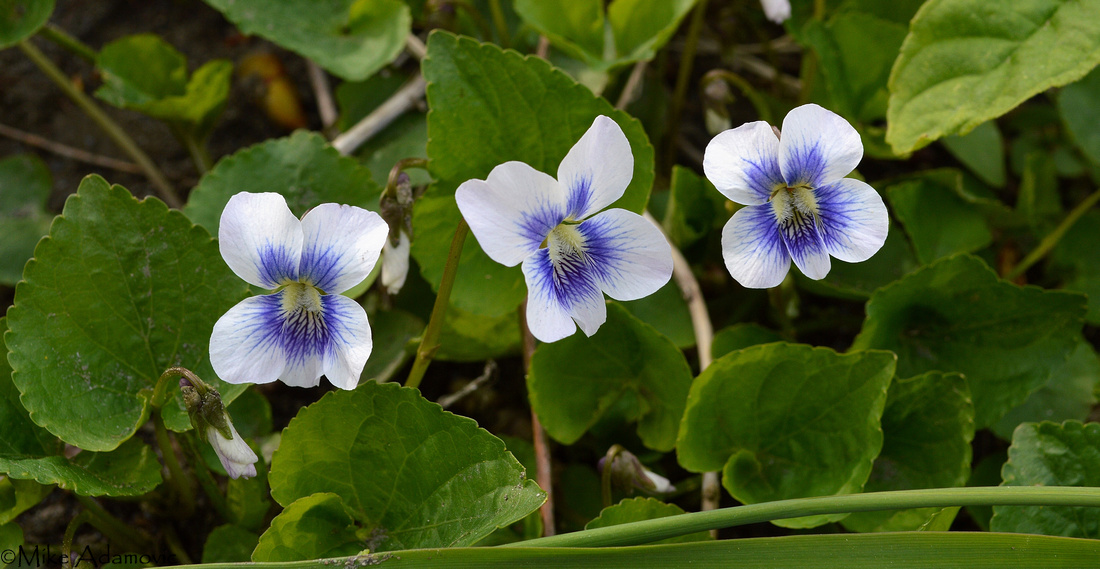

http://adamovicnaturephotography.zenfolio.com/blog/2015/2/violets
Marsh Marigold
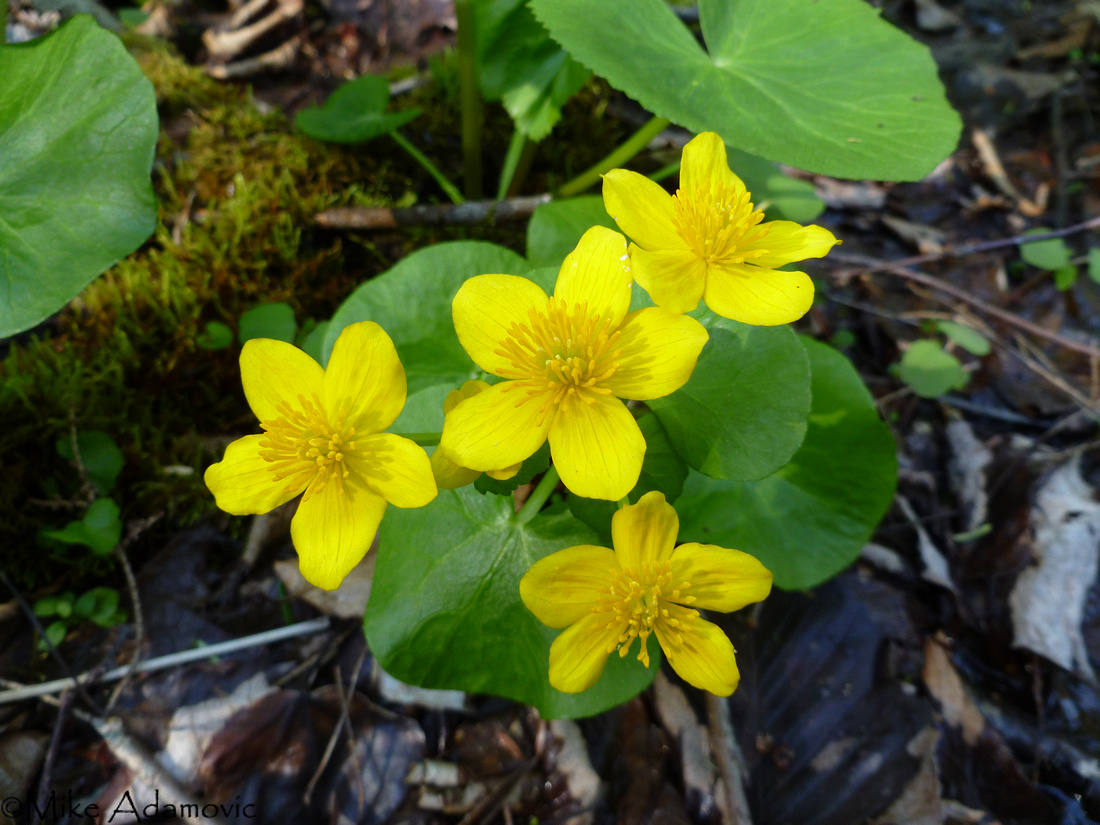

Marsh marigold is perhaps one of the finest flowers of spring, at least when it comes to watery environs. As its name implies, it prefers saturated soil, common to marshes, swamps, and other perpetually damp areas. Blooming amid masses of newly greening skunk cabbages and the withered remains of last year’s growth, the flowers brighten up the often gloomy surroundings like a handful of gold coins tossed onto the muck, shimmering radiantly with even the smallest bit of light.
Plants are in flower from mid-April to mid-May.
Wild Ginger
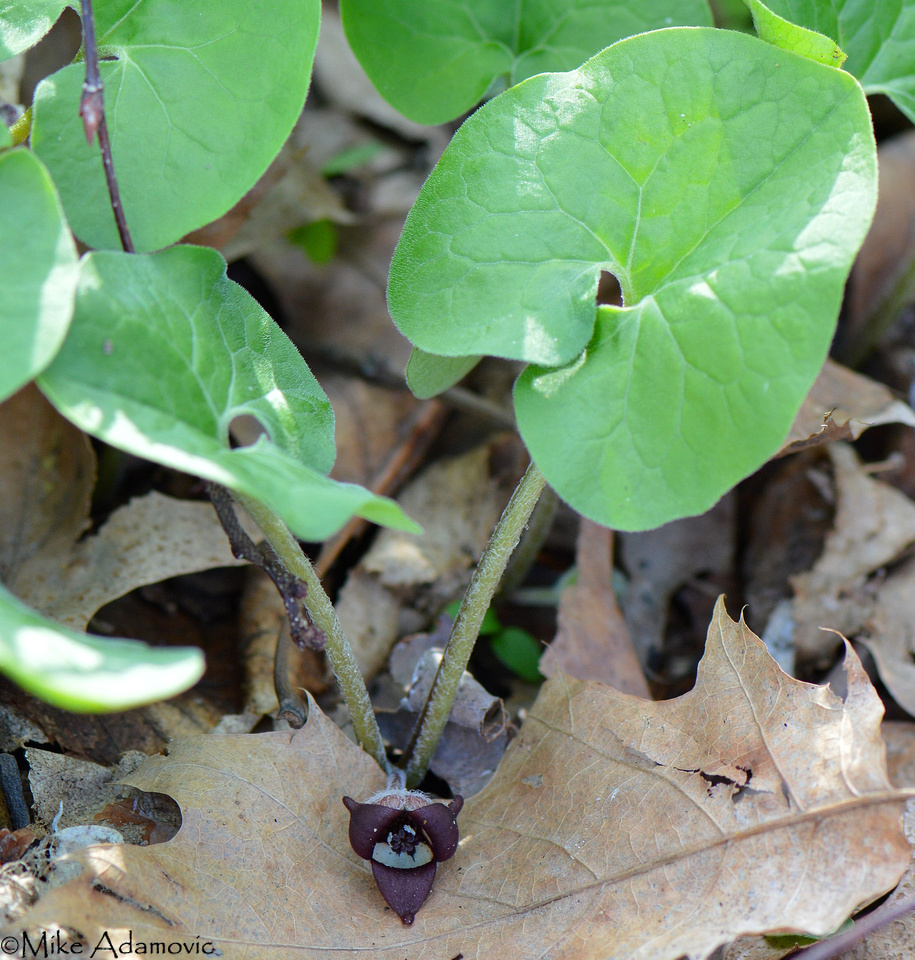

This is one ephemeral that is likely to go unnoticed unless the passerby recognizes the leaves, which form lush moderately-sized mats, often right alongside hiking trails. The small, stubby flower is hidden beneath the foliage and actually lies on the ground, or just above it. Like trillium, the dark purple to maroon hue is identical to that of newly thawed carrion and attracts flies for pollination. Though not related to the ginger sold in grocery stores, the root of this plant has a taste very similar to it, hence the name. The root is reported to have mild antibacterial properties. It was used by the Indians of the area to prevent meat from spoiling. It’s also believed to be a strong bait enhancer for catching fish.
Wild ginger blooms from mid-April to the end of May.
Wild Geranium
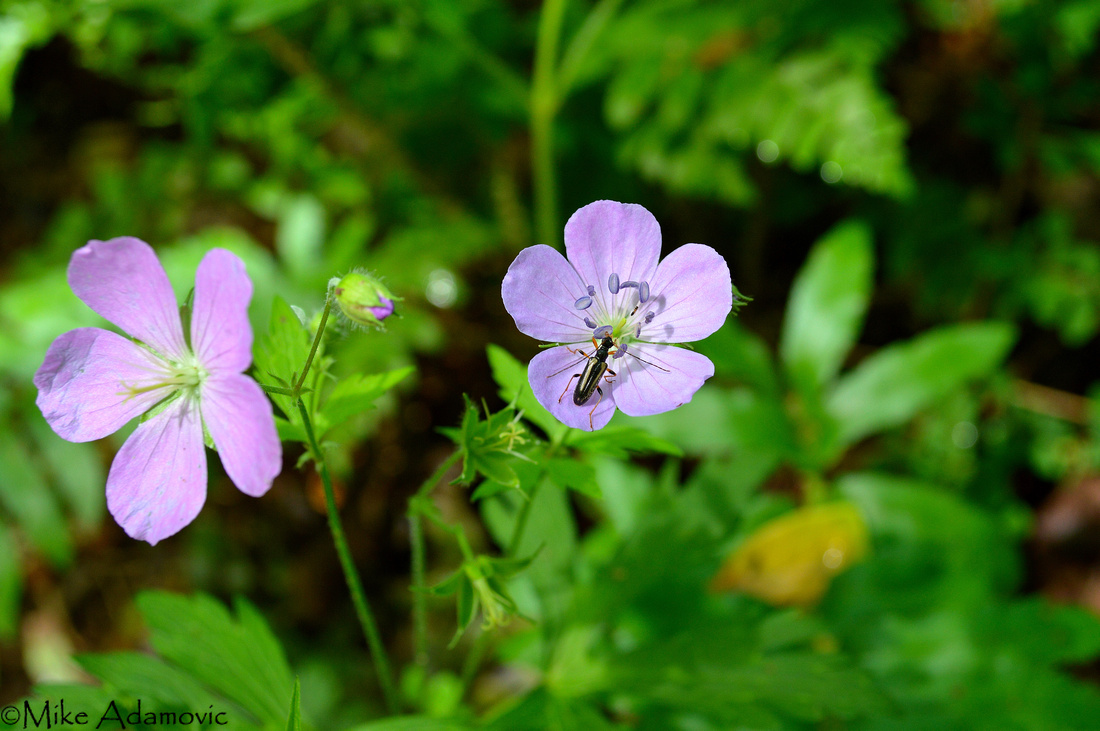

Beginning in late April and throughout the entirety of May keep an eye out for the splendid pinkish-purple flowers of the wild geranium. Unlike many other spring wildflowers, wild geranium is one relatively easy to find, not being unusually picky when it comes to a habitat type, although it does prefer rich, moist soils. Within forests its distribution is cosmopolitan, equally populating the deep shaded interior as it does the sunny edges. The plant is capable of attaining a height of over a foot and a half and sports multiple blossoms.
Rue Anemone
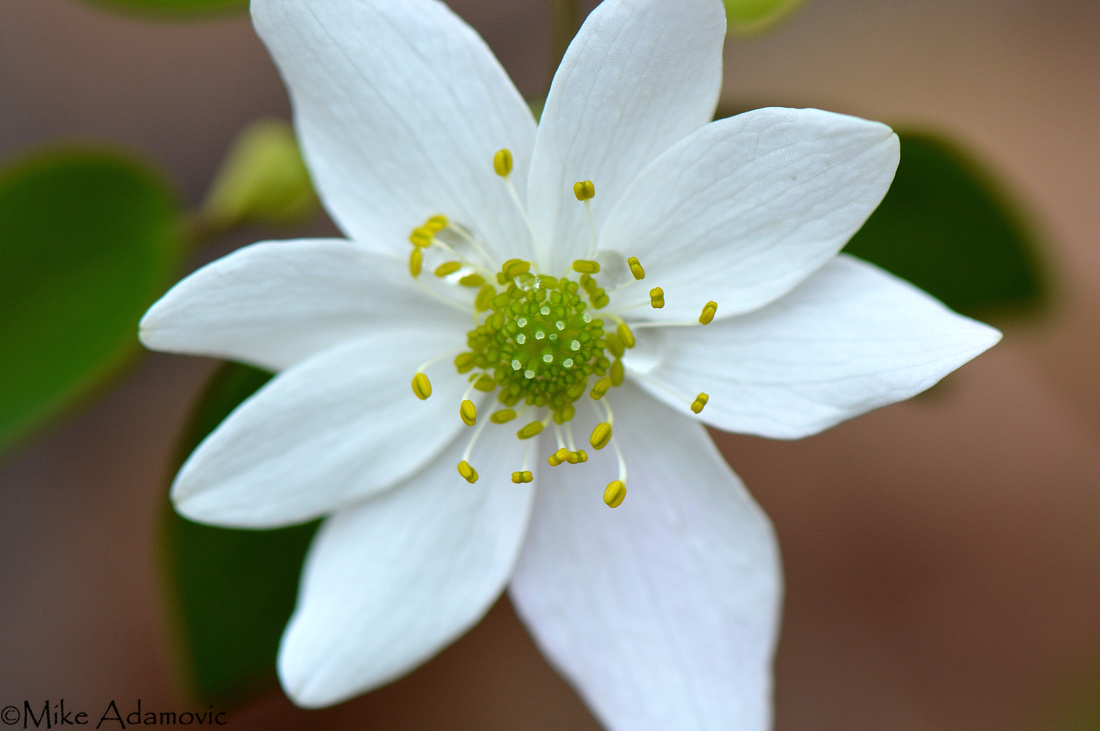

Seemingly the most delicate of the spring ephemerals, the dainty flowers of the rue anemone shake violently with even the slightest breeze. Though forcefully blown in all directions with a single gust the plant always rebounds to an erect position the moment the wind subsides. The thin wiry stem, that easily bends, yet never breaks, is a clever design feature that enables the plants to do without insect pollinators. It relies on the wind to shake loose the pollen and transport it other nearby flowers that often pop-up in clusters along the base of trees.
Plants are in bloom from mid-April to mid-May.
Mayapple
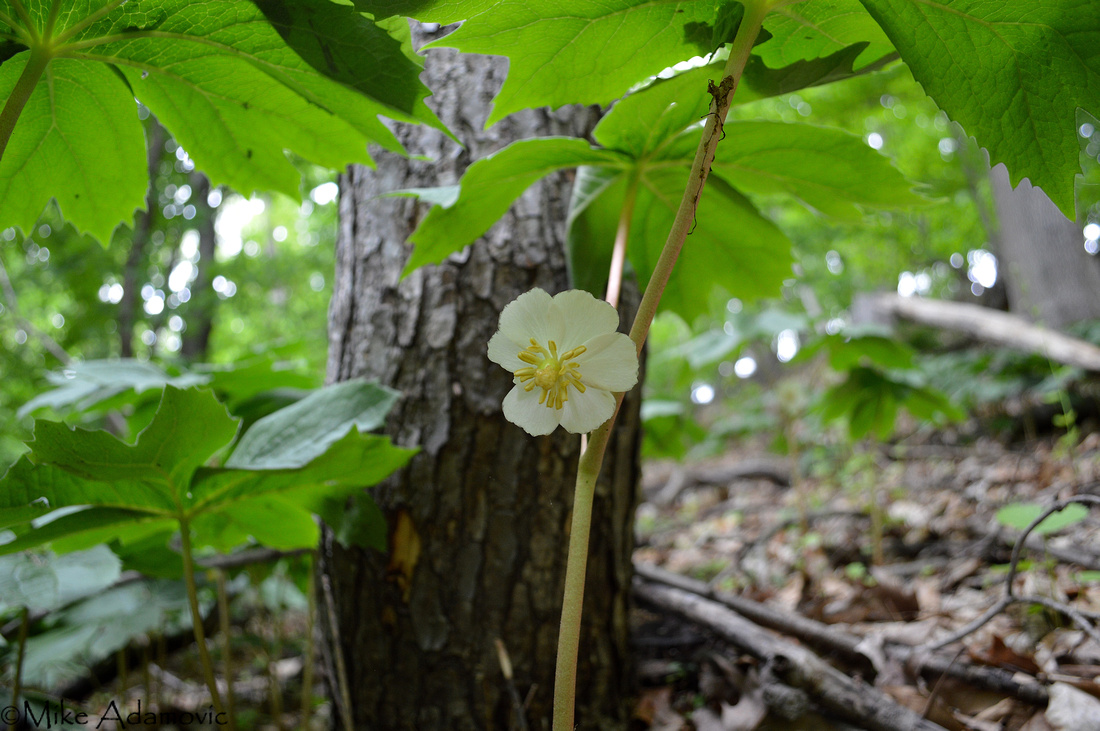

The foliage of the mayapple is on par with the beauty of its flowers. Resembling “green umbrellas,” dual leaves stand firmly erect sheltering a rather robust white blossom beneath. Plants typically form dense groves that can take over sizeable swaths of the understory, shading out all other plant life by means of its expansive leaves. While the flowers bloom in May, the fruit, or “apple,” will not appear until August or September. The fruit is edible when ripe, supposedly tasting like a tart lemon. All other parts of the plant are extremely toxic, including unripe fruit. Native Americans used the root as a means to commit suicide. Despite the encompassing size of some groves, mayapple is a rather uncommon plant whose scarcity in our woods is increasing.
Pink Lady’s Slipper
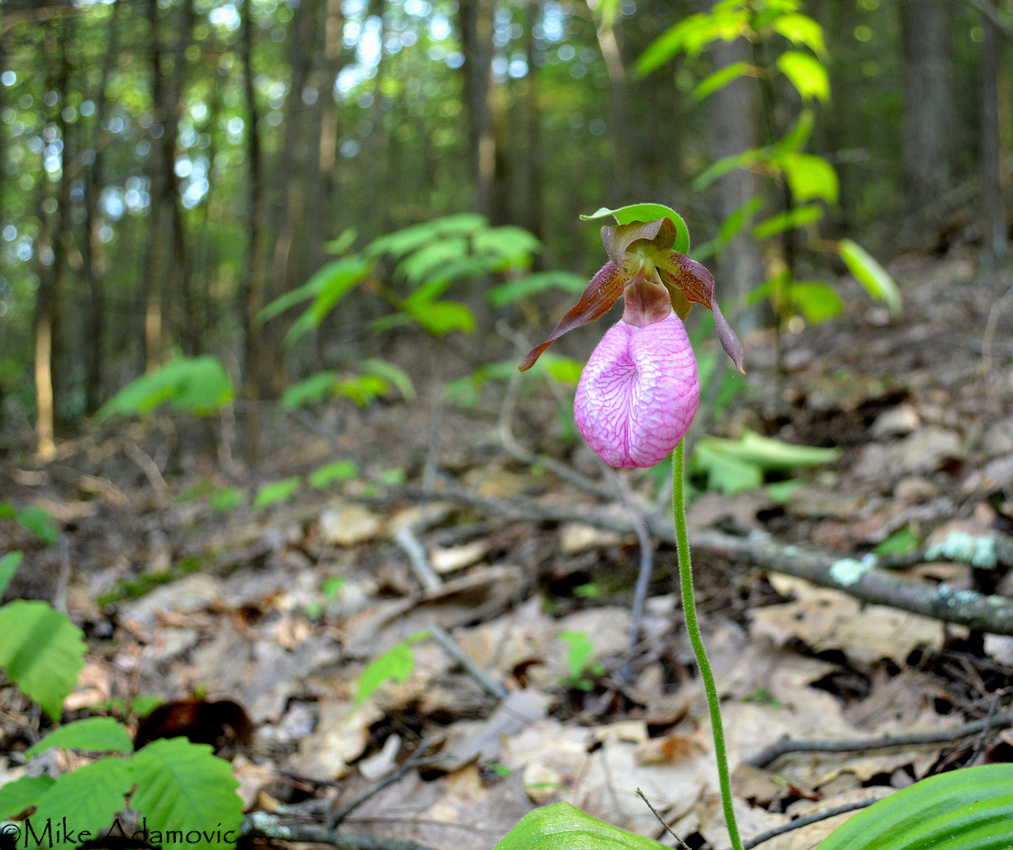

The pink lady’s slipper or Indian moccasin is probably one of the most common orchids in the northeast, but that’s not to say it's abundant. While they have a lifespan of over 20 years, their growth and reproductive rate is extremely slow. Orchids are very choosy when it comes to picking a location to vegetate, preferring highly acidic soils (with a pH below 5) in partially shaded areas of pine stands or well drained deciduous forest. Unlike most plants, the seeds of this orchid do not contain a food supply to help with germination. Instead, orchids form a mutualistic relationship with a fungus from the genus Rhizoctonia that will help germinate the seeds and supply them with the necessary nutrients for growth. As the plants mature, the fungus will be rewarded by being able to siphon back the nutrients it has provided to the seedling, with additional interest.
Look for them in May and June.
Red Columbine
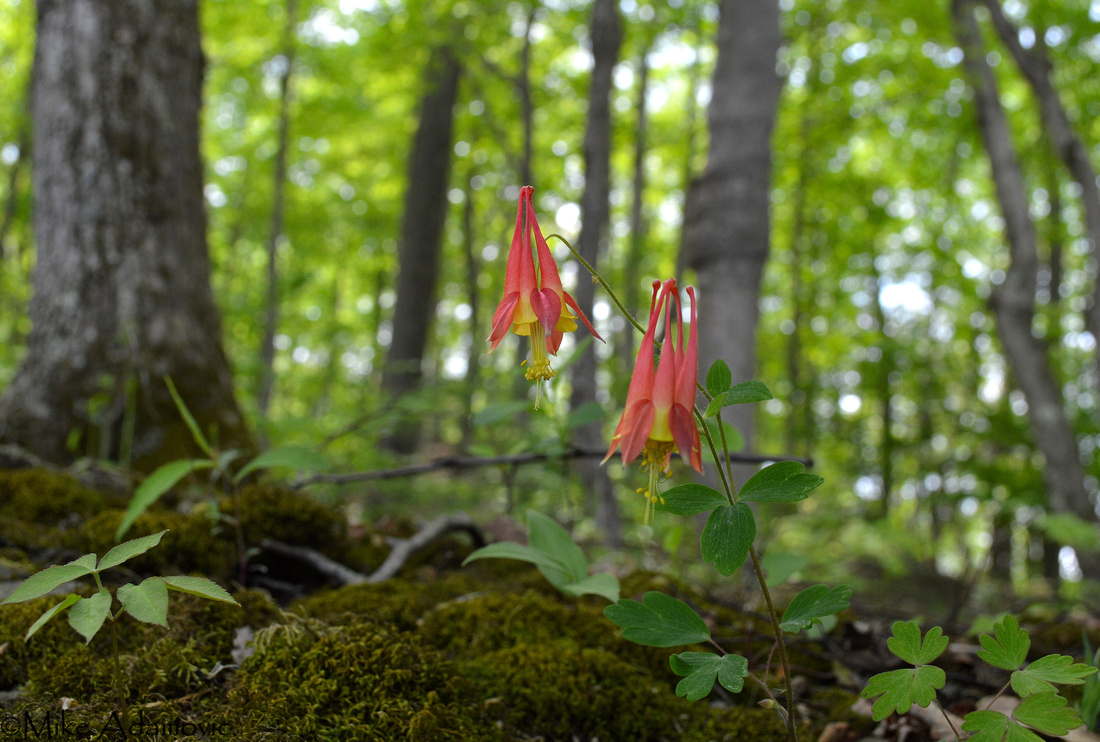

http://adamovicnaturephotography.zenfolio.com/blog/2015/2/red-columbine-aquilegia-canadensis
Forget-Me-Not
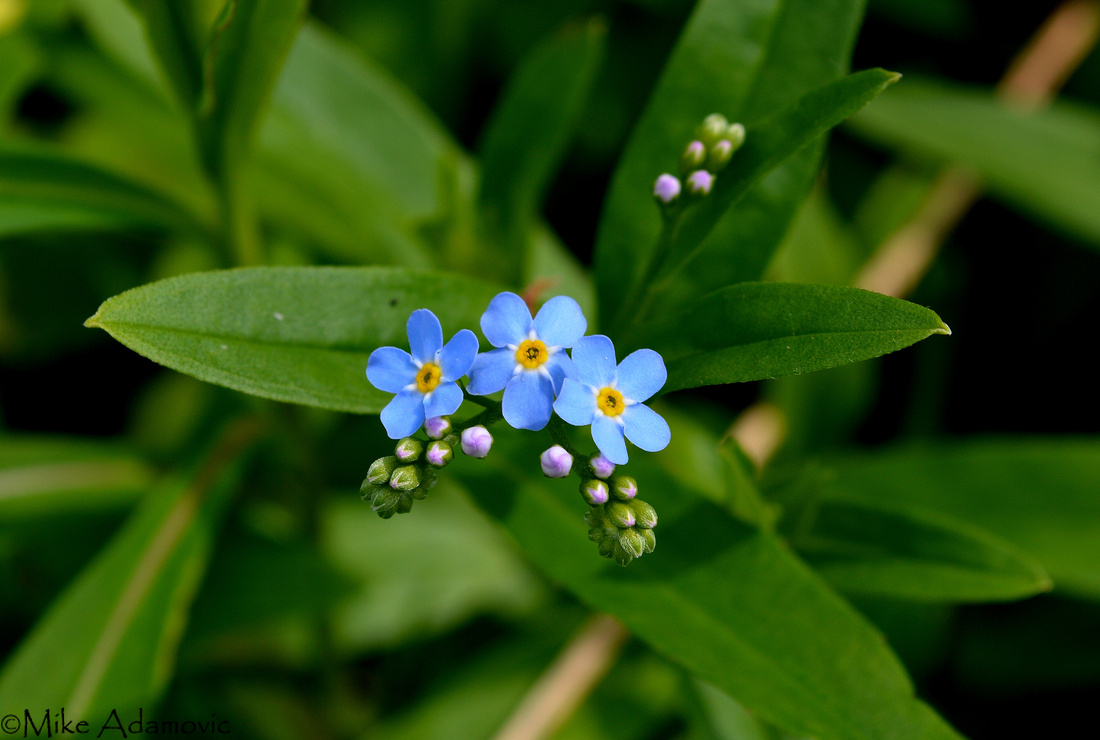

A species of muck and swampy areas, this riparian flower imbued with the essence of a crystal clear sky, is not one easily forgotten. Though individual flowers are diminutive, each plant is capable of producing dozens of the gem-like blossoms. There are numerous legends detailing how this plant received its unusual name.
Flowers first appear in May. Plants may continue blooming until early July.
Comments
Jeff
http://www.printradiant.com | http://www.printlinkage.com | http://www.hitsticker.com | http://www.stickermac.com